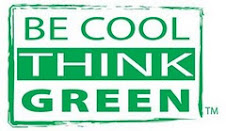 When you think of McDonald´s you do not directly think of green retailing, but this will change. In August 2008 McDonald´s opened the first green restaurant in Chicago. This new restaurant is seen as a “learning lab”, testing all green technologies to adapt to existing and new restaurants.
When you think of McDonald´s you do not directly think of green retailing, but this will change. In August 2008 McDonald´s opened the first green restaurant in Chicago. This new restaurant is seen as a “learning lab”, testing all green technologies to adapt to existing and new restaurants.The new site design includes Unilock permeable pavers on the parking lot, which allow maximum water drainage while maintaining a surface strong enough to support the traffic of a 24-hour restaurant. The use of permeable pavers will also reduce the cost of the onsite drainage system, clean surface stormwater and minimize stormwater runoff. The drive-through lanes have been built with reflective concrete.
The restaurant’s exterior signage is constructed around energy-efficient light-emitting diodes (LEDs), just the second time such lighting has been used on a McDonald’s. By using signage with LEDs rather than traditional sign lighting, McDonald’s will consume less energy – aprox. 25% less enegry. The LEDs will last ten to twenty times longer than the average incandescent light bulb. Along with the environmental benefits and energy efficiency they provide, LEDS also supply strong lighting In addition, TV screens in the dining area help educate customers about the restaurant’s green features.
 When fast food diners have finished their burgers they don’t have to dump their waste in the trash. Collection containers around the property encourage patrons to recycle food containers, newspapers and plastic bottles, and the kitchen preparation area has its own set of receptacles for packing related recycleables.
When fast food diners have finished their burgers they don’t have to dump their waste in the trash. Collection containers around the property encourage patrons to recycle food containers, newspapers and plastic bottles, and the kitchen preparation area has its own set of receptacles for packing related recycleables. The site itself is landscaped with hardy, native plants, resulting in much-diminished water needs; no potable water will be used for irrigation. Water collection systems have been set up to channel rainwater from the roof and condensation from the HVAC system into a cistern buried underground that will then re circulate the water for irrigation. The highlight of the landscaping effort is a rain garden, which promotes natural sheet draining of rain water and ultimately serves to recharge the aquifer deep below the surface of the soil. The rain garden will also scrub pollutants out of water that drains from the drive-through lanes, which may carry automobile pollutants. Overall, the company is hoping for a 50 percent reduction in water use through these sustainable techniques.
McDonald’s new “learning lab” also features a green roof: the upper portion is more functional, planted with extensive species, while the lower portion has been made attractive to passers-by through the use of more visible plants, semi-intensive.
McDonald’s new “learning lab” also features a green roof: the upper portion is more functional, planted with extensive species, while the lower portion has been made attractive to passers-by through the use of more visible plants, semi-intensive.
In the building’s mechanical guts, a pair of heat-recovery systems are positioned to draw heat from the condensing units. Solartube skylights are visible throughout the restaurant to take advantage of natural light and reduce energy use. The indoor artificial lighting is controlled by a sophisticated system that adjusts the foot-candle illumination based on light entering through the skylights. Lighting controls will also sense and adjust energy use in lavatories and support spaces.
Inside the restaurant, the dining room is filled with materials made from recycled content, and paints and cleaning chemicals were chosen for their low environmental impact.















No comments:
Post a Comment